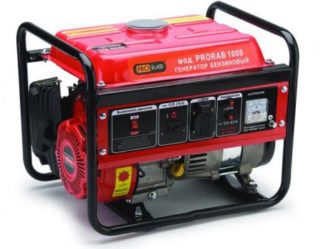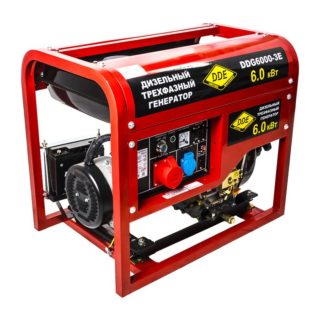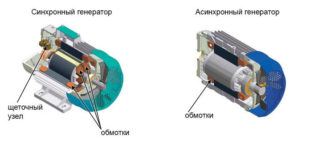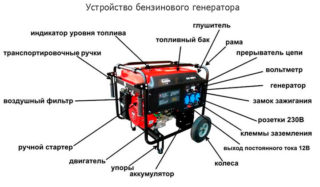Stable and uninterrupted power supply is the key to the successful operation of household appliances. In city apartments, constant food is not a problem, but outside the city difficulties may arise. Therefore, residents of cottages and summer cottages choose autonomous generators. In order for a gasoline generator of electric current for a private house to work in optimal mode, you need to choose its characteristics correctly. The wrong choice can lead to excessive cost or inability to cope with their task.
Types of stand-alone generators

All internal combustion engines can be divided into 2 categories - two and four-contact. Two-pin devices require a mixture of fuel and oil to operate. With four-contact, it's easier - they only need diesel or gasoline.
According to the fuel used, generators can be divided into the following groups:
- With a gasoline engine. These are the most common household appliances. They are distinguished by their low cost, ease of start-up and management. The gasoline generator starts even at a temperature of -20 degrees. Such devices work almost silently in comparison with diesel devices and at minimum speed. The main disadvantages are low motor life and low values of maximum power.
- With a gas engine. The main advantages of a gas-fired device are lower fuel costs and uninterrupted operation without interruptions. It is especially beneficial to install such devices for those who live next to the gas main.
- Diesel engines. These are expensive, bulky and heavy devices that are used in power plants. Their main advantages are economy and high work efficiency.
The advantages of all generators are independence, economy and mobility. A gasoline electricity generator is usually chosen for a house or cottage.
The leading places in the ratings of electric generators are occupied by the American brand DDE, Honda, Elitech.
Choosing the right generator
Generators by type are:
- Asynchronous. They are easy to maintain and do not require an additional cooling system. They work perfectly even with short-circuit currents.
- Synchronous. In them, the output voltage is less dependent on the shaft speed. Stable under varying load conditions.
Asynchronous generators are best chosen for working with a welding machine. For domestic purposes, a synchronous generator for electricity for the home is suitable.
According to the launch system, manual and automatic devices are distinguished. The manual ones are started using a special cable. To turn on the automatic power generator, you need to carry out a number of actions:
- Checking the presence of voltage on the main network. If it is absent, the generator is activated.
- Switching power from the main line to the generator.
- Closing the damper before starting and opening it after the engine has warmed up.
- Starter start.
When voltage appears on the main line, the light generator is automatically turned off. Power is supplied from the main power grid. For home, it is better to choose autostart, in which the device will turn on itself in the absence of voltage.
Additional elements

Various parts may be added to the generator to increase safety and improve performance. They can be installed both at the factory during production and additionally by the owner.
Basic parametric elements:
- Drop sensor. Usually installed at the factory.
- Indicators. The panel can be LED, lamp, pointer. Shows the fuel level, signals about failures and reboots, displays the operating mode.
- Hour meter. Shows the time remaining until the next service or repair.
- Voltmeter. Factory installed in powerful devices. Indicates the wrong operating mode.
- Fuel tank with drain cock and gasoline or diesel level.
- Sockets. Single-phase or three-phase are used.
- 12V output. Sensitive, therefore it is not recommended to connect it directly to the generator. Usually used by motorists to charge the battery.
All of these elements should protect the generator for electricity and make it easier to operate.
One of the most important selection criteria is the number of generator phases. They are single-phase and three-phase. Depend on the electrical wiring in the house. There is an option for connecting a three-phase device to a single-phase circuit. Then the entire load should be evenly distributed over each phase and not exceed 30%.
Power

The main parameter of any electrical appliance is its power. It consists of several indicators:
- Power reserve. It must be there, as there may be power surges in the network. It is recommended to take a generator with a power exceeding the device rating by 2-3 times.
- Active and reactive power. Reactive power is a parasitic value associated with losses. Any household appliance has reactive power that must be taken into account. In electrical appliances, it is usually equal to 0.2 of the nominal. You can find the exact value in the documentation for the device. If a value is not specified there, it is recommended to add 50% of the nominal to the generator power.
- Capacitive load. This is a characteristic of induction motors. It occurs when voltage is applied in a "soft" way, when the stator rotates behind the rotor.
If you do not take into account at least one component, an electric generator for a home will not work correctly.
Cooling
For correct operation of the synchronous generator, you need to take care of additional cooling in advance. It can be airy and liquid. Air cooling is cheaper and easier to operate. But it is not designed for long-term operation and powerful devices.
If the generator for the light is a constant power source, it is better to choose liquid cooling. It is more expensive and more complex, but provides stable performance all the time.











